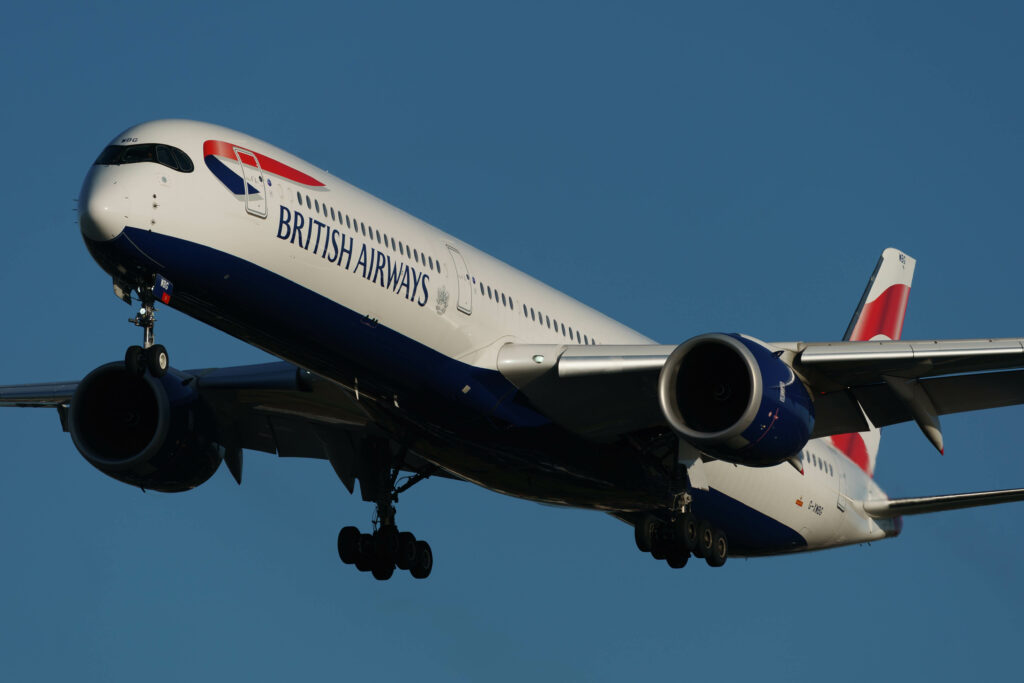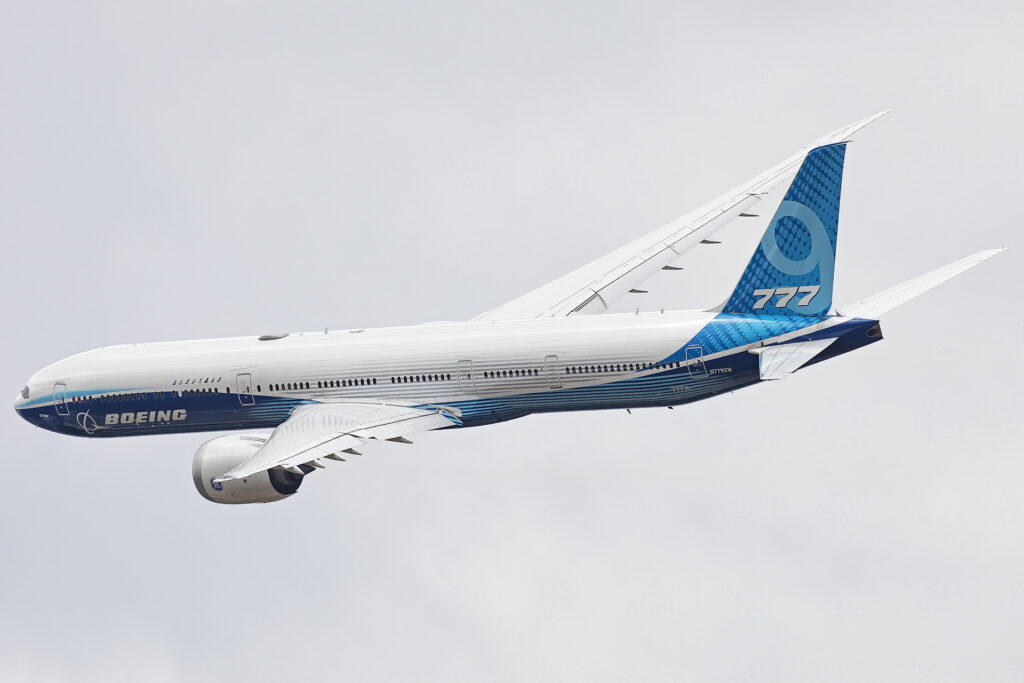LONDON – January 25 marked three years since Boeing’s first 777X took flight, and with the years that have passed, many trials and tribulations have struck the company and project since then.
In this article we will look at how the 777X has shaped up compared to Airbus options and what the future looks like for the aircraft.
The 777X Project
Even before COVID-19, it was clear that the demand for Hub-to-Hub travel was beginning to dwindle, passengers were enjoying the ability for more secondary airport connection options, allowing them to get closer to their destinations and enjoy sometimes cheaper services.
As a result of these, Boeing forecast that the time of the jumbo jets was over, making the decision to no longer focus on the ionic and very successful 747 ‘Queen Of the Skies.’
Instead, it favoured a more modern, widebody twin-engine jet, and with that, the 777X was born.
It is the first commercial passenger aircraft that is due to be mass-produced that will utilise a folding wing tip, a feature which may yet hinder the aircraft in its quest to become FAA certified.
The fact that these mechanical moving pieces and hydraulics are designed to fold the tip, they need to withstand the sometimes intense and strenuous loads of forces experienced in flight and when landing and taking off.
Unique Challenges For Such an Aircraft
The Boeing 777X is set to be one of the most advanced and efficient aircraft in the world. But before it can start carrying passengers, it must first receive certification from the Federal Aviation Administration (FAA). And that’s no easy task.
The FAA is responsible for making sure that all commercial aircraft meet stringent safety standards. To do this, they have a team of engineers who conduct a thorough review of an aircraft’s design. Once they’re satisfied that the plane is safe, they sign off on it and give it a Certificate of Airworthiness.
But the 777X is facing some challenges in getting approved. First, because it’s such a new and innovative plane, there are a lot of unknowns when it comes to its performance.
The FAA wants to make sure that everything works as intended before giving their stamp of approval.
This means that the 777X will likely undergo more flight testing than other aircraft before it can be certified. And this could delay the plane’s entry into service even further.
Right now, Boeing is targeting 2025 for the first delivery of the 777X. But if the certification process takes longer than expected, we could see that date pushed back.
How Does the A350-1000 Shape Up?
The new Boeing 777X is set to be a game-changer in the aviation industry. With its new features and advanced design, it is poised to compete against Airbus’ A350-1000.
But can Airbus really compete against the 777X? The 777X features an all-new composite wing design with folding wingtips, which will allow it to save on fuel and reduce emissions.
It also has a more spacious and comfortable cabin than its predecessor, the 777-300ER. And with a range of over 9,000 miles, it can fly nonstop from Los Angeles to Dubai.

Airbus’ A350-1000 is no slouch either – it too is made of composites, which makes it lighter and more fuel efficient. And its cabin is even more spacious than the 777Xs.
But where the A350-1000 falls short is in the range – at just under 8,000 miles, it can’t quite match the 777X’s range. So can Airbus really compete against the 777X? It remains to be seen. But one thing is for sure – the competition between these two aircraft manufacturers is heating up!
Strong Orders for the Boeing 777X So Far
If there was any doubt about the 777X gaining full certification from the Federal Aviation Authority (FAA) then it has not been shown by airlines, who seem to be more than impressed with the aircraft. It now has 353 confirmed orders for the plane from multiple airlines around the world.
The project has also seen a lot of love given towards 2022 announced 777XF which has already seen the likes of airlines such as Qatar Airways place orders and notable interest in expanding that order should the plane meet their needs and expectations.
With all this being said however, only time can tell how the 777X will stand up. While it clearly has some operational advantages over the Airbus A350, Airbus has the unique ability to push its “Airbus commonality.”
This was a decision by the manufacturer to ensure all of their cockpits follow similar layouts and designs to help reduce training costs for airlines looking to expand their fleet.
This will always play a part in an airline’s decision to buy the 777X over the A350.
Should the carrier want to operate a mid-market jet as well, Boeing doesn’t really have any aircraft able to offer a great deal there, while the A330-8/900neo allows airlines to have both planes operate alongside an A350 with the same crews operating both.
It should be said, however, this is not always the case, as despite the similarity and multi-rating capabilities of Airbus, the Boeing 787 Dreamliner is also no slouch in its own right.
It offers many advantages over the A330neo program, one of them being the -7/8’s smaller wing spans, allowing them to operate into smaller airports, something which carriers such as TUI have very happy and successfully achieved.
Only Time Will Tell
Even with the arguments made above, only time can be the real test for the 777X. Personally, I feel the aircraft will no doubt become a huge success for Boeing and perhaps overtake the amazing records and long life span that its previous 777-2/300 aircraft have enjoyed.
As long as Boeing can maintain consumer confidence in their product, then this only serves to better the aviation market and world, as single-manufacturer domination is never a good thing, even if you do prefer Airbus to Boeing aircraft or vice-versa.









